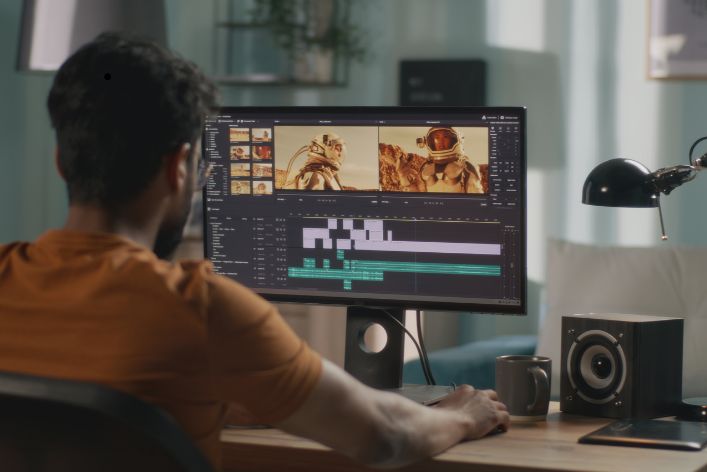Last Updated on December 1, 2022

Most individuals in today’s environment assume that whatever they need will be at the top of Google search results. It’s a lot simpler to bring in new clients for your company if your website appears at the top of the search engine results page (SERP). One of the best investments you can make for your company is to develop a strong search engine optimization plan.
On-page SEO and off-page SEO are the two main subcategories of your search engine optimization plan. Both are essential to an SEO campaign’s success, yet they represent opposing viewpoints.
While off-page SEO concentrates on building the authority of your domain through content development and obtaining backlinks from other websites, on-page SEO concentrates on optimising areas of your website that are under your control.
What is On-Page SEO?
The process of optimising each page of your website to raise its search engine rankings is known as on-page SEO. Your website’s accessibility, loading speed, how effectively your content is optimised, keywords, title tags, and other elements all have an impact on how high your site ranks on search engine results pages. All of these elements are under your control because they are on your own website.
On-Page SEO Factors
Content
There is no denying that content is king. You can use as many keywords, descriptions, and internal links as you like when it comes to on-page optimization, but guess what? Your bounce rate will be quite high if the material isn’t well-written, well-reasoned, and fundamentally beneficial to visitors. Your average page views per session and conversion rates… won’t be impressive.
Title Tag
Simply put, a title tag is a piece of HTML code that lets you give a web page a name or title. Title tags are one of the most crucial on-page SEO elements after your actual page content because these titles are displayed in the browser bar and SERPs. Pick your words carefully! To ensure optimal SERP appearance, titles can only be 60 characters or fewer in length.
Keywords
SEO’s mainstay is keyword optimization. The emphasis has changed toward using more long-tail keywords, which include precise, particular keyword phrases, as Google becomes more adept at understanding nuanced language and search intent becomes more comprehensive. When creating and optimising the content for your website, keep in mind your audience and the keywords they use to search.
Meta Description
A meta description is a concise summation of a web page’s content (155–160 characters at most). To help readers understand how your content is related to their search query and to promote clicks, meta descriptions appear as part of a SERP snippet and often after a headline in a social post.
URL Structure
Navigation on your website is easier for users and easier for search engines to index thanks to a well-organized URL structure. Don’t get too chatty, but URLs with terms that accurately describe the pages they link to are more likely to receive clicks. Use your main keyword for that page in the URL and remove any unnecessary terms.
Alt Text
A brief written explanation of an image that shows on a web page is known as alt text, sometimes known as an alt tag or an alt description. Alt text fills the space if the image doesn’t load properly, letting users know what they’re missing. Users of screen-reading software can also read descriptions of photos in the alt text. Alt text helps search engines better crawl and rank websites for on-page SEO objectives.
You can preserve the alt text for a picture as “automotive-injection-molding-tips” if you use it in your blog to highlight some injection moulding recommendations, for instance. The image will subsequently begin to appear in the image results for that phrase.
Internal Linking
Speaking of connecting, another crucial element of on-page SEO is internally linking relevant pages on your website. It’s an easy approach to help search engines crawl your website and keeps users on your site for longer.
Pillar pages play a role in this situation. Users’ searches are made easier when websites have pages devoted to popular subjects, and you can link all related pages back to that pillar. Consider that you wish to develop pillar pages for injection moulding applications in the automotive, medical, and consumer markets. By identifying your pillars, you can better target your content and URL strategy, link all related content to the main pillar page, and improve your searchability on those subjects.
Mobile Responsiveness
With 1.28 billion tablet users and 6.64 billion smartphone users worldwide, respectively. The need for knowledge seems insatiable.
Websites that are not mobile-friendly require users to pinch or zoom just to view the content, which is annoying and may make them leave. Google mostly employs mobile-first indexing, which means that when indexing and ranking the relevance of a website to user searches, it prefers mobile content to the desktop version.
A mobile-friendly website is obviously an essential component of any online presence.
What is Off-Page SEO?
Off-page SEO is the group of methods you use to advertise your content on external websites all over the internet. Getting your website, business, or brand mentioned on another website is the main goal of this SEO component.
Off-page SEO is most likely something you’ve heard about before in relation to creating links to your website. Although backlinks are crucial and will be discussed in more detail below, off-page SEO encompasses much more than just links.
Off-Page SEO Factors
Backlinks
Backlinks to your website demonstrate to Google the authority of your content. Building backlinks might thereby increase the “domain authority” of your website. How many backlinks your site has affects how well-known it becomes.
Although obtaining backlinks requires patience and high-quality content, there are steps you can take to play an active part in the process. For instance, you can link to your material while writing guest articles for other reliable blogs in your area.
Additionally, you can keep track of online mentions of your website and ask that any unlinked occurrences be given credit. Furthermore, how-to manuals, “best of” listicles, and even infographics are a few typical forms that are linked to. When constructing your inbound links, you’ll want to exercise caution to avoid engaging in any dubious activities since this could result in Google penalising you.
Social media
Even while the number of shares, likes, or comments a page receives does not directly affect its ranking, social media is still a crucial tool for promoting your website online. Social media enables you to connect with potential and current consumers and make your business more visible online. Additionally, Google crawls pages on the main social media sites, so publishing frequently there helps you manage your brand’s SERP.
Google My Business
Google My Business, or GMB for short, enables companies to quickly and easily send crucial data to Google. Location, service region, business type, contact details, and hours of operation are all included in this data. Google uses GMB to populate search results for Google Maps and the Google Local Pack. As a result, for any local firm that depends on traffic from a particular geographic place, it’s an essential off-page SEO aspect. Utilize this crucial off-page and local SEO strategy by setting up your company’s GMB listing to include it on Google Maps.
Domain Authority
Your domain authority is a number that search engines assign to the strength of your website and is scaled from 1-100. In the end, it forecasts how likely it is for a website to appear in search results. The formula is straightforward: the more the domain authority, the greater the likelihood of a good SERP position.
The length of time a domain name has been registered (the longer, the better), its past, the quantity of backlinks, and the quantity of 404 error messages are all used to determine domain authority (which indicate missing pages). To maximise your domain authority and raise your position, make sure your website is technically sound and complies with SEO best practises.
Conclusion
On-page SEO and off-page SEO are sometimes compared in importance by SEO professionals. However, you are under no need to pick between the two approaches, and you shouldn’t either. Instead, in order to raise your search engine ranking, you should ideally combine these two tactics. However, it’s generally advised to focus on your on-page SEO before moving on to your off-page SEO. Prior to requesting links from others, it’s critical to make your own website as outstanding as feasible.
Before you go…
Hey, thank you for reading this blog to the end. I hope it was helpful. Let me tell you a little bit about Nicholas Idoko Technologies. We help businesses and companies build an online presence by developing web, mobile, desktop, and blockchain applications.
As a company, we work with your budget in developing your ideas and projects beautifully and elegantly as well as participate in the growth of your business. We do a lot of freelance work in various sectors such as blockchain, booking, e-commerce, education, online games, voting, and payments. Our ability to provide the needed resources to help clients develop their software packages for their targeted audience on schedule is unmatched.
Be sure to contact us if you need our services! We are readily available.











